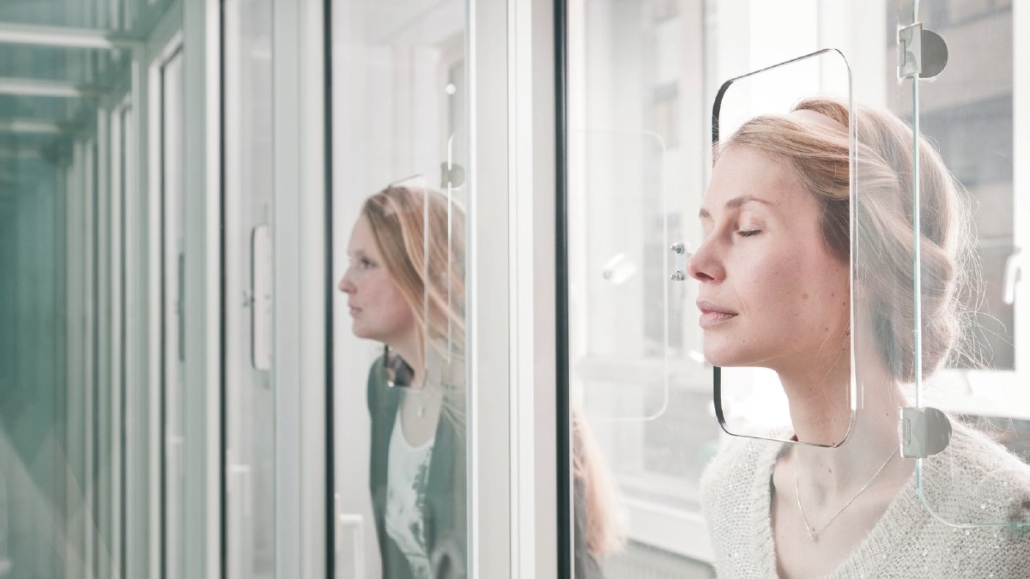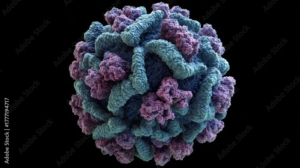I would call it brewed vanillin, Evolva’s CEO Neil Goldsmith once said about the Swiss company’s biotech version of the compound that occurs naturally in the vanilla bean. Vanillin is arguably the most popular aroma in the world. Fermentation – utilising microbes in food production – was one of the earliest human biotechnology endeavours, and its roots in society date back to our prehistoric past. Now modern techniques are taking the ancient science a step further. In the past few years, new biotech methods have allowed the production of specialty compounds like vanillin through processes not unlike those used to make beer, cheese or sauerkraut. Evolva’s vanilla, which was introduced in 2014 in cooperation with US fragrance multinational International Flavors and Fragrances (IFF), was the first major synthetic biology flavouring to hit the food and beverage market.
Flavours and fragrances (F&F) are key components in a huge range of products – from food to cosmetics to detergents and pharmaceutical products. At the moment, most F&F compounds are still produced through chemical synthesis or extraction from plants. But that framework is about to change. There’s a strong push towards biotech-derived flavour and fragrance molecules, says Jens Schrader. The CEO of Germany’s DECHEMA Research Institute is an expert in biotechnology applications used in the production of aroma compounds and terpenoids.
Vanilla from Norway
Before examining the different production methods used in the F&F industry, it helps to start with a look at circular economy processes – where low-cost waste products and by-products are used in the sustainable production of particular molecules. A classic example is the production of a- and b-pinene, which begins with a by-product from the pulp and paper industry known as crude sulfate turpentine. Pinenes are the basis for more than 40 fragrance molecules, among them terpinolene (sweet citrus) and Iso E Super (cedar/sandalwood). Vanillin can also be made from wood. In fact, the first commercial synthetic vanillin made by Haarmann & Reimer (now Symrise) in 1875 was sourced from softwood pine species. Nowadays, Norwegian biorefinery expert Borregaard ASA is one of the few remaining producers of synthetic vanillin ex lignin. The company claims that it processes more than 90% of harvested wood biomass into new, sustainable biochemicals, biomaterials and biofuel – although the use of organic solvents and hazardous chemicals makes the manufacturer’s sustainability claims somewhat difficult to judge. By the way, the lion’s share of vanillin is synthesised in a two-step process from petrochemical precursors guaiacol and glyoxylic acid.
When it comes to flavours and fragrances, the first molecule produced in significant quantities with biotech methods (involving microbes) was probably gamma decalactone. Since the 1990s, this molecule that smells fruity, peachy and pruny or – depending on its stereoisometric configuration – like coconut has been made by fermenting castor oil with the help of yeasts and fungi. More recently, different methods utilising enzymes and microbes have been developed to turn natural raw materials into, for example, aldehydes and alcohols that have a certain desired odor. This process mimics what takes place in fruits and flowers for scent formation during ripening and blooming, explains DECHEMA expert Schrader. In the past few years, the biotechnological production of vanillin has also emerged as an environmentally friendly and economically feasible production process. Using microorganisms like yeasts, fungi and bacteria, these biotech approaches are based on bioconverting certain natural substances (such as lignin, ferulic acid, eugenol or isoeugenol) that have in the past been used in synthetic vanillin production. For example, Solvay SA (Brussels, Belgium) makes vanillin by fermenting ferulic acid (Rhovanil) – a by-product of rice bran oil – using a proprietary strain of yeast. French F&F company Mane SA from Bar-sur-Loup (close to the international capital of perfume Grasse) starts its vanillin production process with eugenol, which is produced by cloves.
But the downside of these bioconversion processes is that both ferulic acid and eugenol are pricy raw materials. Even worse, yields are generally low, because the microbes also produce unwanted side products like vanillic acid.
Synthetic biology hits the scene
To avoid high feedstock costs and toxicity problems, the ultimate goal for many researchers is the complete biosynthesis of complex aroma compounds from simple sugars. Several young biotech companies are competing for the best microbial platform technology, Schrader adds. Evolva, for instance, is focusing on engineered yeast cells. Dutch competitor Isobionics is betting on its bacterial platform. In the US, competitors Amyris and Ginkgo Bioworks also work with yeasts, while Solazyme (TerraVia Holdings) is pursuing a microalgae platform. As in textbook examples of synthetic biology, engineered microbes receive all the genetic information they need to build the enzymes that turn sugars into desirable compounds. So ultimately, GM microbes have to be given features that originally occured in the plant, but magnified and made more efficent. Evolva’s baker’s yeast, for example, produces large amounts of vanillin glucoside. The sugar group makes vanillin much less toxic to the production organism, but it also has to be subsequently removed to produce vanillin. Evolva partnered its technology with IFF in 2014 for commercialisation and distribution, but there has since been little fanfare about the new product. Market research company Leffingwell & Associates believes IFF might be concerned about consumer backlash to compounds made with genetically modified organisms (GMOs). Although the vanillin itself contains no GMO material, the fact that bioengineered microbes were employed in the production process could be enough to turn customers off.
Consumer opinion is also an issue for Robertet, a Grasse-based flavour and fragrance manufacturer. Unlike the IFF-Evolva partnership, the established F&F supplier in this case is European while the start-up (Ginkgo Bioworks) is across the pond in the US. The partners are currently working on eight different F&F ingredients. In February, Ginkgo CEO Jason Kelly said the company’s first product will hit the market in 2017, and will generate sales for Robertet as well as royalty revenue for his firm. Athough the French firm did not respond to a EuroBiotech enquiry, rumour has it that the most advanced synthetic biology product is rose oil. Ginkgo is known to have delivered several prototype strains of yeast with incorporated biosynthetic pathways for rose fragrance production to Robertet. By mixing and matching genes from different cultivars, the French fragrance producer can now customize its own rose fragrances, and possibly generate unprecedented scents.
Quality, affordability, availability
In the case of rose fragrances, the price is probably driving the switch to a fermentation-based production route, reflects Michael Malone, Evolva’s Vice President of Sales and Marketing: It’s all about quality, affordability and availability. The F&F industry is rapidly expanding, and conventional manufacturing methods are generally expensive, not very sustainable and risky, since supply chains can be disrupted by weather, diseases or geopolitical issues. The main advantages of our synthetic biology approach are uniformly high quality and year-round availability, Malone told EuroBiotech.
The CEO of privately-held Dutch biotech company Isobionics supports that narrative. Our products distinguish themselves by unlimited and guaranteed availability, constant quality, high purity and low price, says Toine Janssen. His firm was the first to produce the orange scent molecule valencene with proprietary fermentation technology. Isobionics process uses bacteria from the genus Rhodobacter. Developed by Dutch chemical company Royal DSM, the technology was spun-out and commercialised via the start-up, which was founded in 2008. In 2013, DSM became one of Isobionics’ (by now) ten investors. While most of their competitors are active in a range of business areas, the Dutch have specialised exclusively on the F&F market. Although markets for the sesquiterpene valencene and the major grapefruit aroma nootkatone are comparatively small, we saw a clear advantage back then, Janssen remembers. The most notable advantage is certainly that the move to a niche market allowed Isobionics to avoid direct head-to-head competition with established companies. Producing the isoprenoids from orange and grapefruit peels and juice with conventional methods is expensive and laborious. Employing standard processes, it takes 2.5 million kilograms of oranges, for instance, to obtain a single kilogram of valencene. Most applications for the compound involve flavouring for the beverage industry, although valencene is also sometimes a component in fragrances. The reverse is true for nootkatone, which is widely used by the fragrance industry in markets such as fine fragrances, personal care and household cleaning. It’s also an ingredient suitable to fend off insects. Although producing a kilogram of nootkatone only requires around 400,000 grapefruits, it’s often made by oxidising valencene. There are simply many more orange trees around than grapefruit trees.
Thanks to the acquisition of US company Allylix, Evolva has since also figured out how to make the orange flavouring with yeast cells. By launching yeast-made nootkatone in 2015, the Swiss gained an advantage over Isobionics. The Dutch company had to chemically treat fermented valencene to yield nootkatone. In February, at the Flavourtalk event in Amsterdam, we also introduced nootkatone that is made directly by a proprietary auto-oxidation process, Janssen told EuroBiotech about his effort to catch up. This version of the compound can now be labelled natural. A notable newcomer in the arena is British start-up Oxford Biotrans. With exclusive access to an extensive library of patented, custom-designed cytochrome P450 enzymes with high selectivity for specific substrates, Oxford Biotrans uses one of these enzymes – made in E. coli bacteria – to convert valencene into nootkatone.
Because it was first isolated in a lake environment, Isobionics’ Rhodobacter naturally makes all kinds of isoprenoids, says Janssen. We put a gene for a synthase enzyme in and then we ferment what we want. For example, by switching to a patchoulol synthase enzyme, Isobionics can also make patchouli fragrances. The enzyme produces five patchouli compounds, including patchoulol, in similar ratios to those made naturally. The company is currently working on about 40 F&F molecules, but the Rhodobacter approach could potentially provide around 3,000 products, says Janssen.
Patchouli is one of the essential oils that make up the traditional perfume, and the F&F industry remains strongly dependent on its characteristics for cosmetics, air fresheners and detergents. Traditionally the compound is harvested from the mint-like plant Pogostemon cablin through steam-extraction. The first fermented patchouli product was developed by US company Amyris and launched by Swiss F&F company Firmenich. Dubbed Clearwood’, it was introduced in 2014. Last year, Firmenich added another fermentation-based product, Ambrox Super’, to its portfolio.
Sandalwood and agarwood are two scents that top the priority list at many biotech companies. Fungus-infected agarwood trees are the source of oudh, an oil revered in the Middle East and Asia. Excessive harvesting has practically wiped out natural sources. Sandalwood from Mysore in India was the gold standard, Evolva manager Malone says. But they failed to build up sustainable production there. Biotech could now help boost supply to meet the high demand.
It’s about business, not sensation
Isobionics is also working on biotech versions of sandalwood and patchouli scents, and is soon hitting the market with another compound called beta-elemene. The volatile terpene found in 50 plants and herbs like celery, mint, and ginger root is thought to have anticancer properties – and could also find more applications in the F&F industry. At US$100,000/kg, this molecule is very expensive, says Janssen. In fact, it’s so expensive that it’s practically never used by F&F companies. As there’s no real demand, Isobionics has to make a major effort to sell its cheaper beta-elemene. To gain market traction, we have to develop a new product or application around it, believes Janssen. And whats true for rare F&F compounds is doubly so for completely new fragrances. Only a handful of fragrance companies develop new molecules – and no more than one or two hit the market per year, Evolva VP Malone adds. The industry is very traditional. Some flavours and fragrances are there forever will always be in demand because they drive consumer preference in a wide range of products. In my opinion, new projects by F&F biotech companies have to be heavily driven by business and consumer needs.



 Gilead Science
Gilead Science stock.adobe.photo.com/Popelniushka
stock.adobe.photo.com/Popelniushka  stock.adobe.com/Sadushi
stock.adobe.com/Sadushi